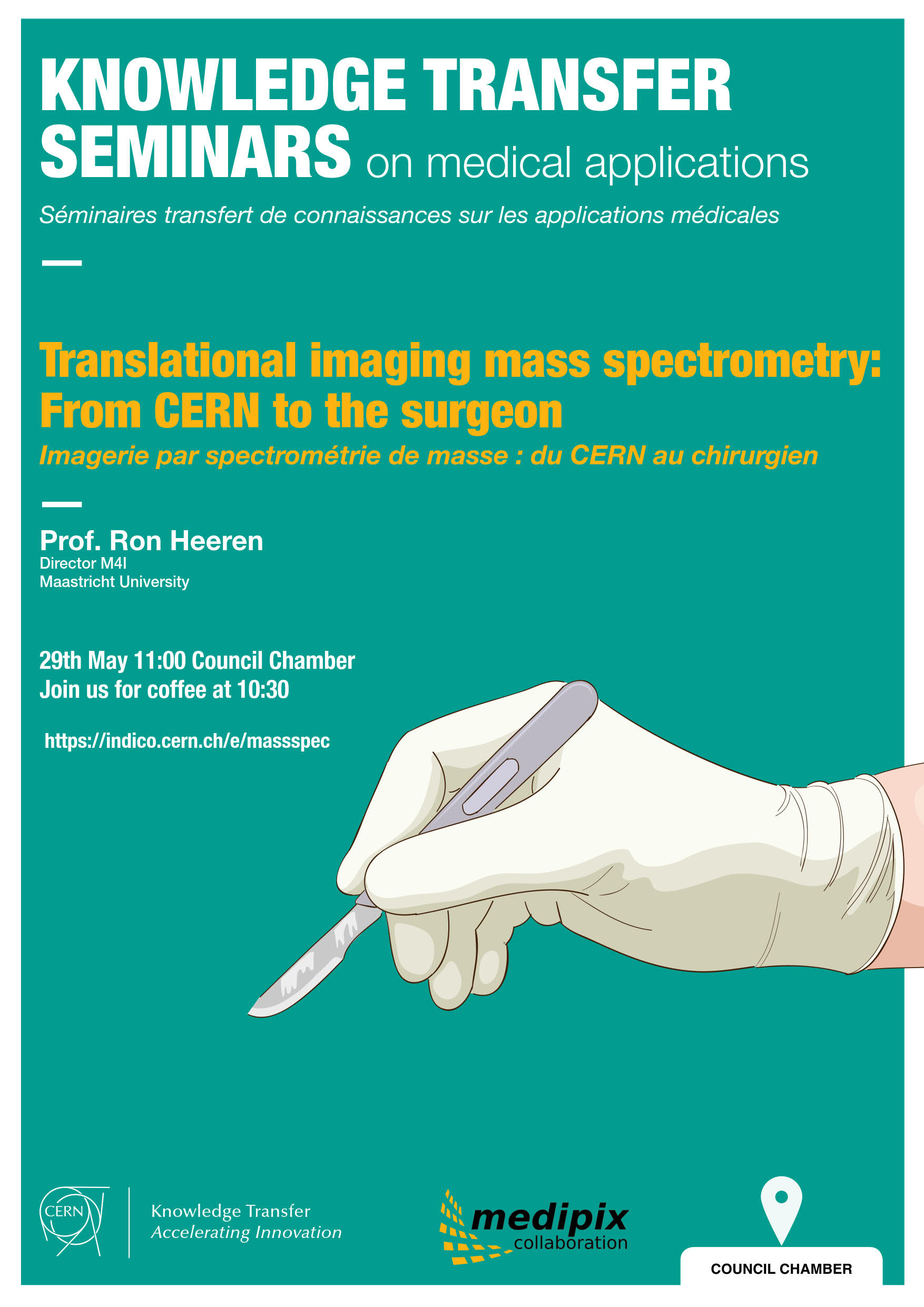KT Seminars
Translational imaging mass spectrometry: From CERN to the surgeon
by
→
Europe/Zurich
503/1-001 - Council Chamber (CERN)
Description

A comprehensive understanding of molecular patterns of health and disease is needed to pave the way for personalized medicine and tissue regeneration. New Mass Spectrometry based chemical microscopes that target biomedical tissue analysis in various diseases as well as other chemically complex surfaces have now firmly established themselves in translational research. In concert they elucidate the way in which local environments can influence molecular signaling pathways on various scales, from molecule to man. The integration of this pathway information in a surgical setting is imminent, but innovations that push the boundaries of the technology and its application are still needed. In particular, researchers investigate comprehensive and isolated biomolecular molecular patterns of health and disease. This is a key element needed to pave the way for personalized medicine and tissue regeneration. One barrier to predictive, personalized medicine is the lack of a comprehensive molecular understanding at the tissue level. As we grasp the astonishing complexity of biological systems (whether single cells or whole organisms), it becomes more and more evident that within this complexity lies the information needed to provide insight in the origin, progression and treatment of various diseases. The best way to capture disease complexity is to chart and connect multilevel molecular information within a tissue using mass spectrometry and data algorithms. This enables translation of high end molecular imaging technologies to the clinical practice in pathology and surgery.
Innovations in the field target breaking boundaries in resolution, sensitivity and speed. The development of novel approaches such as microscope mode imaging combined with innovative detector technology one of these development areas. This lecture the impact of pixelated detectors on translational imaging MS. The molecular patterns that distinguish one cell type from another can be applied during surgery. Intraoperative molecular imaging has emerged for cancer diagnosis and surgical margin evaluation and is considered a revolutionary approach to provide molecular information in real-time from tissues. The implementation of the Timepix detector in this process will truly translate technology from CERN to surgeons
Webcast
There is a live webcast for this event